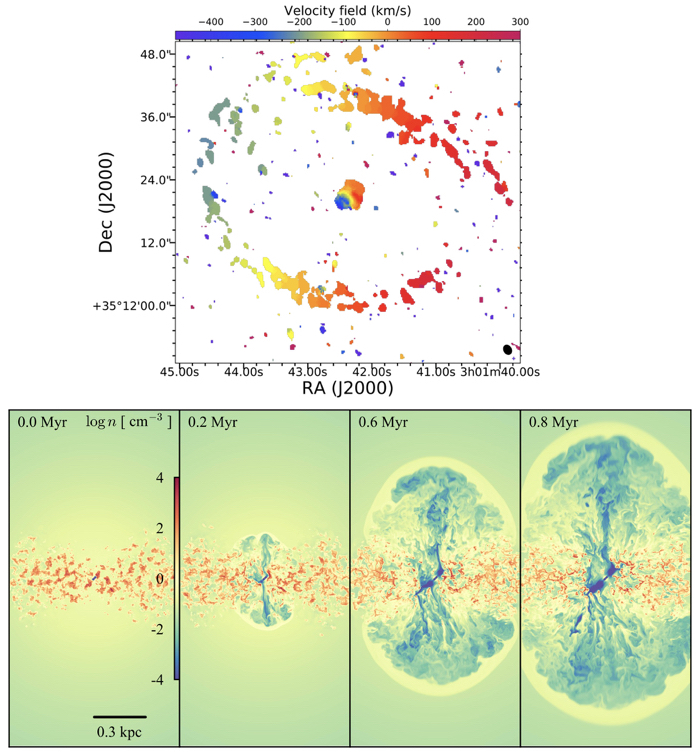Daily Image
16-02-2022Little radio jets that may!
| Submitter: | Suma Murthy & Raffaella Morganti |
| Description: | Galaxies grow by accumulating gas from around them and thereby forming stars. Observations have shown that galaxies do not grow indefinitely despite the availability of gas. It is believed that many physical processes in action from within could potentially stop them from growing. The impact of radio-loud active galactic nuclei (AGN) on the gas within their host galaxies is generally not considered important in this context. Our finding of a low-power jet single-handedly emptying cold gas from the centre of a galaxy shows that the reality may be quite the opposite. This concerns a radio AGN, B2 0258+35. We have been hot on the trail of this source for more than a decade and a half, understanding it bit by bit. Recently, we used the NOrthern Extended Millimetre Array (NOEMA) to study cold molecular gas and found that the low-power jets are singled-handedly emptying the gas from the central region of this source. The image on the top panel shows the distribution of molecular gas in B2 0258+35. The figure is colour coded to represent the velocity of the gas. Negative velocities show the gas coming towards us and positive velocities show the gas moving away from us. The large ring follows the rotation of the galaxy while the gas in the centre is in the form of a fast outflow. The image on the bottom panel is a series of snapshots from a relativistic hydrodynamic simulation of radio jets expanding into a gas disc by our collaborators, Geoffrey Bicknell, Alexander Y. Wagner, and Dipanjan Mukherjee. The kinematics of the gas observed in the central region of B2 0258+35 matches that of the gas seen in this simulation quite well, confirming some of the assumptions and predictions of these theoretical models. This discovery, published in Nature Astronomy, highlights the importance of these sources in shaping the evolution of galaxies, since such low-power radio sources form the vast majority of the radio AGN population. More at: The NOVA press release Nature Portfolio Astronomy Community blog NOEMA observatory news |
| Copyright: | Suma Murthy |
| Tweet |  |
